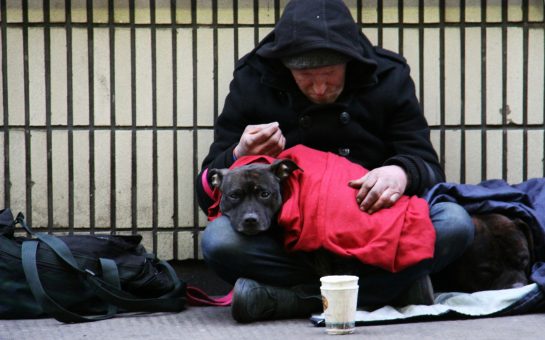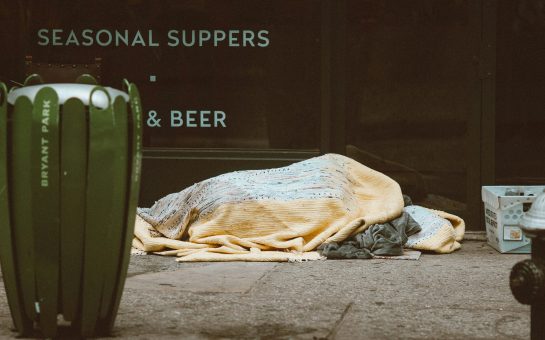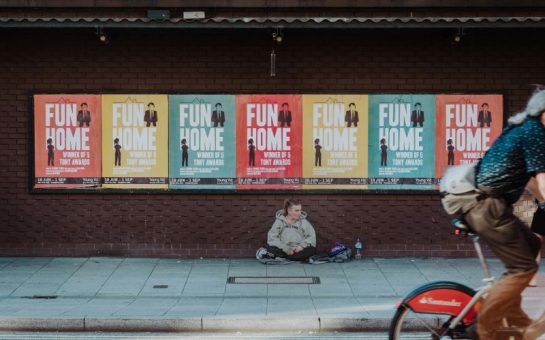Twenty years after Cardboard City, will the new Homeless Reduction Act bring about the end of rough sleeping?
In February 1998, around 30 people sleeping in an underpass beneath the Bullring roundabout near Waterloo station were given an eviction notice from Lambeth council and ordered to leave.
The encampment, known as Cardboard City, was the most visible example of homelessness in the UK and home to its largest, most intractable group of rough sleepers.
It would soon be demolished to make way for the BFI’s new IMAX cinema, scoring a political victory for prime minister John Major’s government after declaring an end to rough sleeping on Britain’s streets.
In April this year, the most significant piece of new housing legislation since 1974’s Housing Act will come into force as part of a new pledge to end rough sleeping by 2027.
Twenty years after Cardboard City was closed, are we finally ready to end rough sleeping for good?
Cardboard City first appeared in the 1970s and at its peak in the 1980s, around 200 people bedded down each night, sleeping in homemade ‘bashes’.
In 1994, Major sparked controversy as prime minister when he described beggars as an ‘eyesore’ and pledged to clear rough sleepers from Britain.
Lambeth Council wanted to close Cardboard City, but its dwindling number of residents were refusing to leave.
Jeremy Swain, chief executive of the homelessness charity Thames Reach, remembers the resistance well.
“The interesting thing about closing the Bullring was that it was quite controversial at the time,” he explained.
“There was a stereotype of ‘breaking up the community’ but these were dangerous places – in the Bullring there was a level of human suffering in the extreme.
“There was violence and exploitation was on display as much as friendship.”
In the 1980s, one of his worst experiences was finding the body of a young man, dead for some time, covered in rat bites.
By the 1990s, the government’s rhetoric may have been antagonistic, but Jeremy remembers the period as a turning point when investment was coupled with a real commitment to make lasting change.
The question of what to do about the 28 or so people in the Bullring had become something of a headache for Lambeth Council.
Thames Reach decided to strike a deal and offer their help in return for guaranteed homes for each resident.
Six months after the closure in March 1998, the charity says, the majority were still in accommodation.
“It was one of our strongest achievements,” explained Jeremy, “My only regret is that we didn’t close it down earlier.”
One of the only records of the transient Cardboard City community is in Moyra Peralta’s photography collection, Nearly Visible.
After volunteering for St Mungo’s soup kitchen in the 1970s she gained an unparalleled insight into the lives of London’s rough sleepers.
“I was not making ‘art’ over the decades out of a social problem – nor was it a social document to begin with – it is only now, years later, that I see the images as a kind of visual sociology,” she told me.
Moyra spent months chronicling life in Cardboard City and after the high court upheld Lambeth Council’s eviction order, she told the Independent:
“They are feeling terribly upset. They think their whole way of life is going”.
One of her portraits is of a young man named Stef.
Over the course of a few weeks, he told me about his time in Cardboard City, after arriving in homeless in London.
“The night before the Bullring I slept in a door opening out of sight near a small church”, he told me.
“That night tops the list of one of the worst in my life, spent mentally drained and in below-zero temperatures that didn’t allow any rest.
“Come early nightfall I passed through the Bullring. It seemed like a good place to sleep, and I needed it.
“I found some cardboard, a quiet corner, sneaked in, lay down and told the world to give it its best shot. This man doesn’t care.”
Stef was woken up by another rough sleeper, in an act of generosity, offering him a sleeping bag for warmth.
Twenty years later, he describes the Bullring as a place of ‘immense joy and fun, to bitter grieving, mind-numbing violence and unsurpassed kindness.’
“At its core, the Bullring was so much larger than the people still living there,” he told me.
“For some it was a social meeting place, for some it was refuge.
“Whatever it was it was more than housing or lack thereof.”
Stef was offered permanent housing by Lambeth Council after the eviction.
“It was luck for me,” he said, “for others it must have been an attempt to rip their unpopular community apart in a very British way of divide and conquer by spreading their housing over all the boroughs of London.”
In the years after the Bullring closed, rough sleepers started disappearing from our streets.
In 2002, a count estimated that there were 504 rough sleepers in England and Wales, half the total in 1998.
But by 2017, more than 8,000 people were recorded as sleeping rough for at least one night a year – three times higher than a decade ago.
Much focus has been given on the housing crisis across the south east of England, and the estimated 400,000 ‘hidden homeless’ living in temporary accommodation.
Last year, parliament passed the first significant piece of housing legislation since 1974’s Homeless Act which enshrined local authorities’ statutory responsibility to provide housing for people in need.
Coming into force this April, the Homeless Reduction Act act aims to push councils to intervene earlier to identify people at risk of homelessness and take preventative action.
But the number of hardened, long-term rough sleepers is also growing, and a new task force headed up by Communities Secretary Sajid Javid has been set up, once again aiming to end rough sleeping, by 2027.
I asked Jeremy whether new legislation will impact long-term rough sleepers.
“For people who have been on the street for a long time, it is much more difficult as the issues are very much health related”, he said, “we can’t avoid the fact that we should be expecting much more joined support from services for people with health needs.
“Sometimes trying to get a community mental health team to come out on the street is nigh on impossible.”
A homeless man’s life expectancy is just 43, but it is not standard procedure for agencies to come together to investigate whether deaths on the street are preventable – something Thames Reach want to change.
“If there is one thing we need to achieve in the next five years,” Jeremy continued, “it is to fix the health and social care services in local authorities and see them work together much more with housing services.
“We have keep reminding ourselves that every single night is a life and death situation – and very sadly there will be more deaths this year.”
Housing chiefs in Manchester and other regional cities have warned that they may soon face cardboard cities of their own, and in the outskirts of London, tent camps with homeless migrant workers have appeared, suggesting we may be going backwards.
For Jeremy, there are two key successes to hang onto.
Last year only four people under 18 slept rough in London, and only 3% of rough sleepers were out in all four quarters of the year – showing how quickly our welfare state and outreach charities can still respond.
“We don’t remember sometimes just how bad it was when we had large-scale encampments like Cardboard City,” he said, “nor appreciate how much better things are now.”
But the fact remains that long-term rough sleeping is rising.
Despite new legislation and new commitments, the joined up and well-funded health and social care services rough sleepers need are still out of reach.
In our email correspondence Stef told me he was angry about rising homelessness.
Reflecting on events twenty years ago he wrote: “Looking back on the big hooha about the Bullring closure, what a farce and focus on a symbol, with little interest in cause and cure.”
With many thanks to Moyra Peralta, Jeremy Swain, and Stef, who asked for his full name not to be used in this article.




